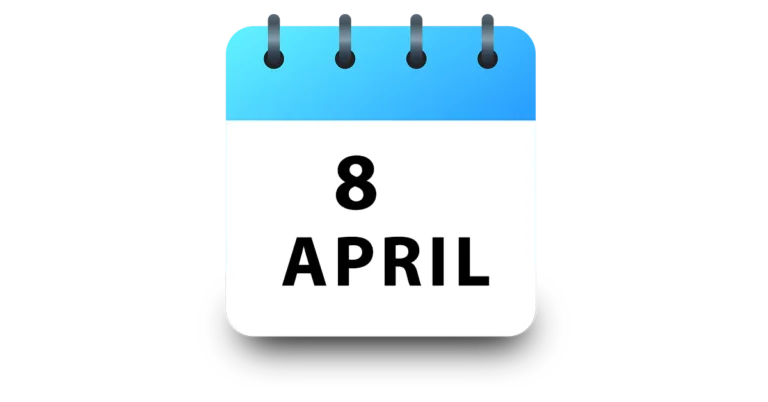19 July 2023 : Daily Current Affairs
DAILY CURRENT AFFAIRS
- DAILY CURRENT AFFAIRS
- 1. As exports dip in the face of global uncertainty, no clear target for FY24
- 2. A fascinating fusion of rock art in A.P.’s Rudragiri
- 3. The India-UAE deal to trade with rupees
- 4. SC Collegium recommends four advocates as HC judges
- 5. Monsoon’s uneven march could fuel food inflation, caution economists.
- 6. Digitization will curb land-linked illegal activities
- 7. Refund portal launched for investors of Sahara Group cooperative societies
- 8. MDB should adopt a triple mandate to tackle poverty
- 9. WHY EUROPE HEAT WAVES HAVE GOT NAMES FROM GREEK MYTHOLOGY
- 10. Why Kuno cheetahs are at extra risk due to radio collars
- For Enquiry
19-July-2023
Daily Current Affairs For UPSC ,Daily Current affairs of The hIndu and Indian Express.
1. As exports dip in the face of global uncertainty, no clear target for FY24
Topic: GS3 – Indian economy
What is the news?
- Merchandise exports in the first quarter of this year shrunk by 15.1% compared to the previous year.
- The government is cautious about setting a clear target for outbound shipments this year and is considering scenario-based targets instead.
- The Commerce Ministry initially communicated a target for exports in 2023-24 to export promotion councils and overseas diplomatic missions, but there is now a rethink underway.
- Goods exports experienced a significant decline, with a 22% drop in June, the steepest fall in 37 months.
- Services exports also slowed down after a period of growth, with estimated growth of 5.2% to $80 billion in 2022-23.
- The broader target for exports, as per the new Foreign Trade Policy, is to achieve $2 trillion by 2030, with services and goods exports accounting for a trillion dollars each.
- Due to the slower global trade growth forecasted by the World Trade Organisation for 2023, the government is hesitant to set a singular target for exports.
- Petroleum exports have been heavily impacted, with a sharp decline of 33.2% in the first quarter, mainly driven by the reduction in global oil prices.
2. A fascinating fusion of rock art in A.P.’s Rudragiri
Topic: GS1 – Indian art and culture.
More information about the news:
- Rudragiri hillock in Andhra Pradesh houses remarkable archaeological monuments from different historical periods.
- It features five rock shelters that served as living quarters during the Mesolithic age, showcasing luminous rock paintings from around 5000 B.C.
- Two natural caves at the southern end of the hillock exhibit exquisite murals from the Kakatiya kingdom, dating back to the 13th century A.D.
- The Kakatiya artworks depict scenes from the epic Ramayana, with sketches and outlines surviving despite damage over time.
- The first cave portrays the battle between the Vanara brothers Vali and Sugriva, while the middle cave showcases a grand sketch of Hanuman carrying the Sanjivani hill.
- The third cave houses both Mesolithic rock paintings and an elegant figure of Hanuman depicted in a unique ‘Anjali’ posture.
- The Ramayana figures and the Mesolithic drawings coexist, displaying different artistic techniques and preserving the scenic beauty of the site.
3. The India-UAE deal to trade with rupees
Topic: GS2 – International relations.
Context:
- The Reserve Bank of India (RBI) and the Central Bank of the UAE signed two MoUs during Prime Minister Narendra Modi’s visit to the UAE.
More information about news:
- The first MoU aims to promote the use of local currencies, the rupee and the dirham, for cross-border transactions through the establishment of a Local Currency Settlement System (LCSS).
- The LCSS will enable exporters and importers to send invoices and make payments in their respective domestic currencies, reducing exchange-rate risks and optimizing transaction costs.
- This initiative is significant for exporters as it helps in discovering competitive pricing and enhances cooperation between banking systems, contributing to the expansion of trade and economic activity.
- The second MoU links India’s Unified Payments Interface (UPI) with the UAE’s Instant Payment Platform (IPP) and also facilitates the linking of card switches.
- The UPI-IPP linkage allows for fast, convenient, safe, and cost-effective cross-border fund transfers, while the card switches enable mutual acceptance of domestic cards and processing of card transactions.
- These measures aim to address the high costs associated with remittances, making transactions more affordable and accessible, particularly for low-wage earners.
- The development follows similar efforts to facilitate cross-border money transfers, such as the collaboration between the National Payments Corporation of India (NPCI) and Singapore’s PayNow.
- India experienced a significant increase in remittances in 2022, with GCC countries contributing to about 28% of the total remittance inflows.
- The World Bank’s report highlights the favorable employment and income conditions for Indian migrants in GCC countries and the significant contributions from high-skilled migrants in countries like the U.S., the U.K., and Singapore.
Importance of news: These points can be added in mains answer related to India – UAE relations.
4. SC Collegium recommends four advocates as HC judges
Topic: GS2 – Indian polity.
Context:
- The Supreme Court Collegium recommended the names of four advocates for appointment as judges of different High Courts
What is collegium system of Supreme Court:
- The collegium system is a system of judicial appointments in India that is not explicitly mentioned in the Constitution. It was developed by the Supreme Court through a series of judgments, beginning with the First Judges Case in 1981.
- Under the collegium system, the Chief Justice of India (CJI) and four other senior-most judges of the Supreme Court form a collegium that is responsible for recommending the appointment of judges to the Supreme Court and the high courts. The government is not involved in the initial selection process, but it has the power to refuse to accept the collegium’s recommendations.
- The collegium system has been criticized for being opaque and for giving too much power to the CJI. However, it has also been defended for ensuring the independence of the judiciary.
- Here are some of the key features of the collegium system:
-
- The collegium is headed by the CJI and consists of four other senior-most judges of the Supreme Court.
- The collegium is responsible for recommending the appointment of judges to the Supreme Court and the high courts.
- The government is not involved in the initial selection process, but it has the power to refuse to accept the collegium’s recommendations.
- The collegium’s decisions are made by a majority vote.
- The collegium’s decisions are confidential.
- In recent years, there have been calls for reform of the collegium system. Some people believe that the system should be more transparent, and that the government should have a greater role in the appointment process. Others believe that the system should be abolished altogether, and that a new system should be put in place.
Model question: Discuss the merits and demerits of the Supreme Court collegium system of judicial appointments. Do you think the system should be reformed?
5. Monsoon’s uneven march could fuel food inflation, caution economists.
Topic: GS2 – Indian economy.
Context:
- Despite an overall increase in rainfall above the long period average in July, the southern peninsula, Deccan Plateau, and eastern region of India continue to experience below-normal monsoon and lower kharif sowing.
Uneven monsoon rainfall in 2023 and implications:
- By July 15, the overall sown area of kharif crops was 2% lower compared to the same period in 2022.
- Maize, rice, and pulses are among the major crops facing shortfalls in sowing, with significant decreases in the area sown for Arhar (more than 38% lower than last year).
- Reservoir levels in the western and southern regions are lower than last year, and there has been uneven distribution of rainfall across the country.
- The Indian Meteorological Department predicts that parts of Uttar Pradesh, Bihar, Assam, Punjab, Karnataka, and Tamil Nadu may experience below-normal rainfall this month, which could further affect sowing of paddy and pulses.
- The deficient rainfall and lower sowing of rice and pulses have contributed to higher food prices, leading to food inflation concerns.
6. Digitization will curb land-linked illegal activities
Prelims:
Mains: GS-III < e-technology, Land reforms in India>
Context:
- Observing that Unique Land Parcel Identification Number could be useful like Aadhaar Card, President Droupadi Murmu said on Tuesday, addressing after presenting the ‘Bhoomi Samman2023’at a function organized by the Union Ministry of Rural Development.
- The transparency coming from digitization would curb unethical and illegal activities related to land.
Digitalization of Land
- Digitalization of land was implemented to update all settlement records, digitize maps and surveys, increase transparency in the system for maintaining land records, and reduce the scope of land disputes.
- This would enable faster transactions, lessen conflicts, and offer clear titles of land ownership that could be easily tracked by government officials.
Benefits of the Digitalization of the Land
- Digital India Land Information Management System A unique land parcel identification number that could be used fully like the Aadhar Card is being provided.
- This would help to make proper use of the land parcels as well as forming and implementing new schemes of the government such as
- Linking E-courts with land records and registration databases would benefit greatly.
- The transparency coming from digitization would curb unethical and illegal activities related to land.
- The modernization and digitization of land records would have a great impact on the development of the country.
- By lowering transaction costs, risks, and uncertainties, a thorough and open land record management system helps foster a market and transaction environment for land. Using their land titles as collateral can also help landowners gain access to markets, insurance, and credit.
- Digitisation of land records and their linkages with various government departments would help in the proper implementation of welfare schemes.
- It would also be of great help in case of loss of documents due to calamities like flood and fire where documents will be safe.
The Digital India Land Records Modernization Programme (DILRMP)
- It is a central Sector scheme which was launched by government of Indian in 2008.
- It attempts to build upon the commonalities that exist in the arena of land records in various States to develop an appropriate Integrated Land Information Management System (ILIMS) across the country, on which different States can also add State-specific needs as they may deem relevant and appropriate.
Unique Land Parcel Identification Number (ULPIN)
- ULPIN System will have a 14-digit – Alpha-numeric unique ID for each land parcel.
- The Unique IDs based on the Geo reference coordinate of vertices of the parcel would be of international standard and compliance with the Electronic Commerce Code Management Association (ECCMA) standard and Open Geospatial Consortium (OGC) standards.
- it will provide compatibility so that all states can adopt it easily.
- proper land statistics and land accounting through ULPIN will help develop land banks and lead toward Integrated Land Information Management System (ILIMS).
- it will ensure uniqueness in all transactions and keep the land records always up-to-date.
- a link to all property transactions gets established.
- delivery of citizen services of land records through a single window.
- sharing of land records data across departments, financial institutions, and
- all stakeholders; standardization at the data and application level would bring in effective integration and interoperability across departments.
7. Refund portal launched for investors of Sahara Group cooperative societies
Prelims: Social Development
Mains: GS-I <Society>
Context: Union Home Minister and Cooperation Minister Amit Shah on Tuesday launched the Central Registrar of Cooperative Societies (CRCS)- Sahara Refund Portal, on which depositors of four cooperatives so cities of Sahara Group can submit their claims to get their money back.
Refund Portal
- The “genuine” depositors of the four cooperative societies of the Sahara Group — Sahara Credit Cooperative Society Limited, Saharayan Universal Multipurpose Society Limited, and Hamara India Credit Cooperative.
- Society Limited and Stars Multipurpose Cooperative Society Limited — can submit their claims on the portal.
What are Cooperative Societies?
- A Co-operative Society is an organization that is formed by a group of people whose primary objective is the promotion of the economic interests of its members.
- This is achieved by the Cooperative sharing its profits amongst its members, in proportion to their contribution to the Cooperative’s business, from which its overall profits are derived.
- It needs to be registered under the Cooperative Societies Act, of 1912 in order to function as a legal entity. Members of the society raise the capital within themselves.
- Some of the aspects of a Co-operative Society include:
- Entities that want to register as a Cooperative Society must comply with the provisions of the Co-operative Societies Ordinance 1952 (‘the Ordinance’).
- A Minimum of 10 members are required for cooperative societies of which no members are part of another society.
- It should be created by laws that outline the Society’s operations.
- Prohibition of the use of the word “co-operative” – in accordance with section 56(1) of the Ordinance, no person other than a registered society shall trade or carry on business under any name or title which includes the word “co-operative” without the direction of the Head of State.
- Any person who contravenes the above requirement is guilty of an offense and shall be liable on conviction as a fine.
8. MDB should adopt a triple mandate to tackle poverty
Prelims: social development and poverty
Mains: GS-I < social empowerment> GS-III< Inclusive Growth>
Context:
- The G20 Independent Expert Group on Strengthening Multilateral Development Banks recommended to
- multilateral development banks (MDBs) adopt a triple mandate of eliminating extreme poverty, inclusive growth, and the financing of global public goods.
- and to constitute a ‘Global Challenges Funding’ mechanism for ‘Global Public Goods.
Multilateral Developments Banks
- MDBs a financial institution established by multiple member countries across the world.
- These banks are owned by multilateral development banks such as IMF, a national government, and other international institutions and organizations.
- The MDBs provide financial and technical support to developing countries to help them strengthen economic management and reduce poverty.
- To support the world’s poorest in every corner of the globe, strengthening institutions, rebuilding states,
- addressing the effects of climate change, and fostering economic growth and entrepreneurship.
9. WHY EUROPE HEAT WAVES HAVE GOT NAMES FROM GREEK MYTHOLOGY
Prelims: Climate change and world Geography
Context:
- As Europe swelters under two heat storms within two weeks, the weather phenomena have acquired names from Greek mythology.
- While the first heat wave that hit the continent on July 10 has been dubbed ‘Cerberus’, the latest one has been named ‘Charon’.
- These names have not been given by official weather agencies, their popularity has soar amid the rising temperatures.
European Heat Waves:
- The World Meteorological Organisation (WMO) claims that warm air masses from Africa and extremely hot weather in Australia, India, Pakistan, and some regions of the Middle East are to blame for heatwaves in Europe.
- According to meteorologists, a rise in the earth’s temperature is amplifying heat waves.
- The World Weather Attribution group conducted scientific research on the recent heatwave that affected all of Europe and came to the conclusion that human activities that influenced climate change increased the likelihood of the region’s high temperatures.
- By the 2040s, heatwaves might become more frequent in Europe than once every two years, and temperatures could rise by 3 to 5 degrees Celsius by 2100 if the current trend holds.
Heat Waves in India
- India experiences heat waves from March through June.
- IMD defines a heatwave event when an area in the plains reaches a maximum daytime temperature of 40 degrees Celsius.
- The threshold temperature is 30 degrees Celsius over the hills.
10. Why Kuno cheetahs are at extra risk due to radio collars
Prelims: National Parks and Biodiversity
Mains: GS-III< Biodiversity>
Context:
- Recent death of two Cheetahs died of suspected septicemia from festering neck wounds caused by radio collars in Kuno.
- Injuries have been spotted in at least three other animals — Oban, Elton, and Freddie.
- A setback for the reintroduction project has baffled many who are used to routinely collaring wild cats for monitoring and research both in India and Africa.
The problem with the collars
- Carrying something on the body for long has its downsides.
- A study published in the Journal of Clinical and Diagnostic Research found a significantly higher presence of Staphylococcus aureus bacteria on the wrists of watch wearers compared to others. (‘Wristwatches as the Potential Sources of Hospital-Acquired Infections’: 2012)
- Staph getting into the blood can lead to sepsis or death.
- Cheetahs can get hot spots, which are often triggered or aggravated by a trick of a flea bite and can worsen rapidly. They are common under the collars and a wet coat makes the condition worse.
- Tight fitting collars can cause pressure necrosis — think beds ores— that begins with rapid loss of hair around the neck.
National Park
- An area, whether within a sanctuary or not, can be notified by the state government to be constituted as a National Park.
- National Park created to protect the ecological, faunal, floral, geomorphological, or zoological association or importance, needed for the purpose of protecting & propagating or developing wildlife therein or its environment.
- No human activity is permitted inside the national park except for the ones permitted by the Chief Wildlife Warden of the state under the conditions given in Chapter IV, WPA 1972
Kuno National Park:
- It lies in the Sheopur district of Madhya Pradesh.
- It is part of the Vindhyan Hillis of Central India.
- Kuno National Park was chosen as the site for the “Action Plan for Introduction of Cheetah in India.”
- Kuno National Park named after the Kuno River, one of the main tributaries of the Chambal River, runs through Kuno, which is primarily a grassland region.
For Enquiry

19 July 2023 : Daily Current Affairs

18 July 2023 : Daily Quiz

18 July 2023 : Indian Express

18 July 2023 : PIB

18 July 2023 : The Hindu Editorial Notes PDF

18 July 2023 : Daily Current Affairs

17 July 2023 : Daily Quiz

17 July 2023 : PIB

17 July 2023 : The Hindu Editorial Notes PDF

17 July 2023 : Daily Current Affairs
Daily Current Affairs 19 July 2023 : Daily Current Affairs DAILY CURRENT AFFAIRS
18-July-2023
Daily Current Affairs For UPSC ,Daily Current affairs of The hIndu…
Daily Quiz 18 July 2023 : Daily Quiz 18 july 2023 : Daily quiz…
Indian Express 18 July 2023 : Indian Express Indian Express
18-July–2023
The Indian Express, CSE candidates can stay informed about current…
PIB 18 July 2023 : PIB PRESS INFORMATION BUREAU
18-July-2023
Daily Current Affairs For UPSC ,The PIB ( Press Information Bureau…
The Hindu 18 July 2023 : The Hindu Editorial Notes PDF The Hindu Editorial
18-July-2023
Daily Current Affairs For UPSC ,The Hindu Editorial Summary
Facebook-f
Twitter
Youtube
1. There…
Daily Current Affairs 18 July 2023 : Daily Current Affairs DAILY CURRENT AFFAIRS
18-July-2023
Daily Current Affairs For UPSC ,Daily Current affairs of The hIndu…
Daily Quiz 17 July 2023 : Daily Quiz 17 july 2023 : Daily Quiz…
PIB 17 July 2023 : PIB PRESS INFORMATION BUREAU
17-July-2023
Daily Current Affairs For UPSC ,The PIB ( Press Information Bureau…
The Hindu 17 July 2023 : The Hindu Editorial Notes PDF The Hindu Editorial
17-July-2023
Daily Current Affairs For UPSC ,The Hindu Editorial Summary
Facebook-f
Twitter
Youtube
1. India’s…
Daily Current Affairs 17 July 2023 : Daily Current Affairs DAILY CURRENT AFFAIRS
17-July-2023
Daily Current Affairs For UPSC ,Daily Current affairs of The hIndu…



